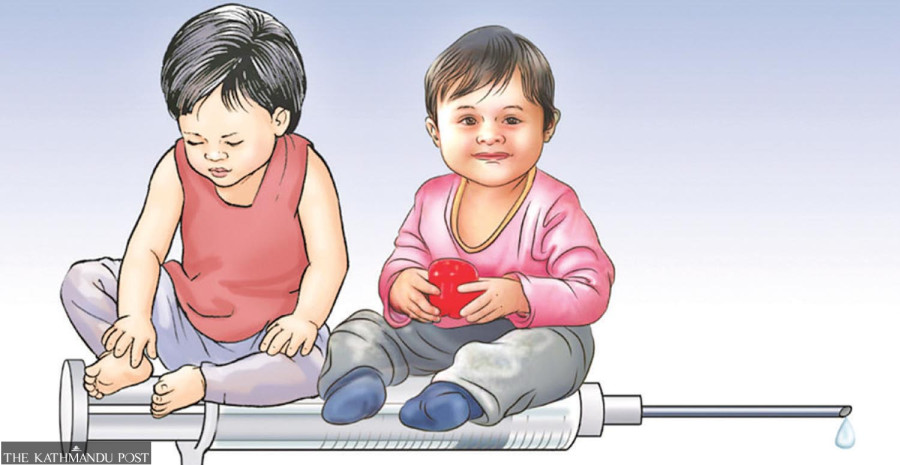Health
More children in cities miss routine vaccinations
At least four percent of Nepali children aged 12 to 23 months have not received any of the regular vaccines.
Arjun Poudel
A few days ago, a team of female community health volunteers came across a two-year-old completely unvaccinated child in Ward-1 of Dakshinkali Municipality.
When the volunteers asked the mother why her child had not been inoculated, the mother said she had a bad experience—her elder child had gotten sick after a routine vaccination, and as a result she decided against vaccinating the younger one.
“We have been trying to convince the mother about the importance of vaccination,” said Bishnu Lamichhane, chief of the Health Section of the municipality, on the outskirts of Kathmandu. “She isn’t convinced so far. But we are still trying.”
The Ministry of Health and Population has launched a nationwide door-to-door campaign to “search and inoculate” children who have missed out on routine immunisation.
The move comes after a recent report of the Nepal Demographic and Health Survey-2022 carried out by the ministry showed at least four percent of the children aged 12 to 23 months have not received any of the routine vaccines recommended by the World Health Organisation.
Health workers deployed in big cities say they have been finding more and more either unvaccinated or partially vaccinated children, which, according to health experts, is an alarming reality.
“Even the locals of the national capital are hesitant about vaccination and are depriving their children of routine immunisation. This is a serious matter,” said Anjana Khadka, public health nurse serving at Health Office Kathmandu. “We have been trying to track down all children who have not received vaccines on the routine immunisation list.”
In 2016, the number of unvaccinated children (aged 12-23 months) was just one percent. The rapid surge in the number of unvaccinated children poses a serious threat to the overall achievements the country has made over the years in immunisation through huge investments, child health experts warn.
Health workers have found the vaccine dropout rate high in children of the migrant population.
“We have found several children of people working in brick kilns, daily wage labourers, and those living in slums not receiving all vaccines on the routine immunisation list,” said Khadka.
Health workers serving in the districts bordering India cite the floating nature of population, migration and lack of awareness on the importance of routine vaccination as the main challenge to warding off vaccine-preventable diseases.
“The vaccine dropout rate is higher in cities than in remote areas,” said Gokarna Giri, chief of the Health Office, Bardiya. “This is true not just for one or two cities, but all big cities.”
The government provides 13 types of vaccines through the national immunisation programme. Earlier, only 11 antigens were included in the programme. Later, the Ministry of Health and Population added rotavirus and typhoid vaccines to the regular immunisation list. There are more than 16,000 immunisation clinics across the country.
Floating population, migration, problems in data keeping, lack of access of female community health volunteers for the families staying in high-rise apartments, and poor awareness on the importance of vaccination are thought to be responsible for the low vaccination and rising vaccine dropout.
“Some people make an excuse saying their children were sick at the time of vaccination, some say they were not at home or did not get information about the vaccination date, some other say vaccination is unnecessary,” said Dr Abhiyan Gautam, chief of Immunisation Section at the Family Welfare division under the Department of Health Services.
“Some women said their husbands warned them against vaccinating their children after the children fell ill following vaccination.”
Immunisation is universally the most cost-effective and efficient way to control and eliminate vaccine-preventable diseases that contribute to childhood illnesses and deaths.




 15.12°C Kathmandu
15.12°C Kathmandu














